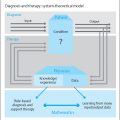 18 Blockade of Adhesion Molecules
18 Blockade of Adhesion Molecules
 Lectins and Tumor Metastasis
Lectins and Tumor Metastasis
The discovery that human liver contains membrane-associated β-D-galactose-specific lectins has initiated new lines of thought and experimental approaches (1). Based on this finding, the organotropism of metastatic malignant tumors has been interpreted in the light of a lectin-receptor theory for the first time (2). According to this theory, the galactose residue on tumor cell membranes may be regarded as a tumor-associated cryptantigen.
This carbohydrate group could have formed secondarily during malignant transformation by losing a terminal sugar molecule (e.g., N-acetyl-neuraminic acid, NANA), or it could just be a component of a precursor substance that has not changed into a “normal” glycoconjugate. Such “precursors” are known to occur in tumor cell membranes in the form of glycoproteins as well as glycolipids. They usually are formed due to the absence or inhibition of glycosyltransferases and belong, from the serological point of view, to the human blood groups (2).
As it turned out, vertebral lectins (e. g., the liver cell receptor for asialoglycoproteins, or liver lectin) also possess mitogenic properties. It is therefore assumed that these lectins play a decisive role in the adhesion of circulating tumor cells and, through appropriate stimulation, also in their growth behavior by interacting with exposed carbohydrate structures on the tumor cells (“contact stimulation”). Paradoxically, the metastatic tumor cell, with its incomplete, membrane-associated sugar molecules—often identical with the tumor marker—is recognized by the organ-specific lectins as belonging to the organ and is therefore captured. A corresponding mechanism has been found, for example, for neuraminidase-treated serum glycoproteins and hormones, where the loss of NANA means aging (9).
The process of metastasis is no accident but is governed by inhibiting and promoting interactions between the tumor and its host organism. Experimental research on tumor metastasis suggests that specific changes on the tumor cell membrane (such as the appearance of incomplete carbohydrate chains as tumor markers) and on organ-specific lectins (which act as mitogenic adhesion molecules) play a decisive role for the organotropism of metastasis (3, 4). The discovery and biochemical analysis of the galactose-specific liver lectin (hepatic binding protein, HBP) finally lead to the hypothesis that a liver damaged by disease (with lectins reduced in numbers or functionally restricted) might be relatively unreceptive for metastases. If an organ (e. g., the liver) is altered through disease (such as cirrhosis, fatty liver), the organ-specific lectins no longer function; hence, they can no longer recognize and bind the sugar molecules exposed on the tumor cell membrane. As a result, metastasis can no longer occur in the classic (hematogenous, lymphogenic) manner.
Analyzing the medical histories of more than 1500 cancer patients at the Surgical University Clinic, Cologne, Germany, has confirmed the following hypothesis: in a pathologically altered liver, the organ-specific adhesion molecules (lectins) can no longer fulfill their task of clearing the serum from asialoglycoproteins and neuraminic acid-free cells (such as tumor cells with a terminal galactose in membrane-associated carbohydrate residues).
In patients with liver damage, we found a considerable increase in asialoglycoproteins in the serum and a significantly reduced incidence of metastasis of malignant tumors in the liver (Table 18.1)(11). These results were confirmed by a Japanese study (10), where 40 out of 250 patients with colorectal carcinoma developed liver metastases (16 %) but cirrhotic liver damage was detected in none of these. In the same cohort, however, metastatic growth could not be found in patients with a pathologically altered liver.
Table 18.1 Development of liver metastases in cancer patients with/without liver diseases, such as cirrhosis, chronic hepatitis, fatty liver (11)
| Cancer patient examined | Patients with liver metastases |
| Normal liver | 1047 | 710 (68%) |
| Damaged liver | 495 | 33 (7%) |
| Total number of cancer patients | 1542 | 743 (48%) |
 Experimental Blockade of Liver Lectins
Experimental Blockade of Liver Lectins
After the role of organ-specific lectins (liver lectins) in glycoprotein metabolism and tumor metastases in the liver had been demonstrated by experimental and statistical studies (4), the following experiments basically focused on evidence for interactions at the molecular level between organ cells and tumor cells:
•
Stay updated, free articles. Join our Telegram channel

Full access? Get Clinical Tree



